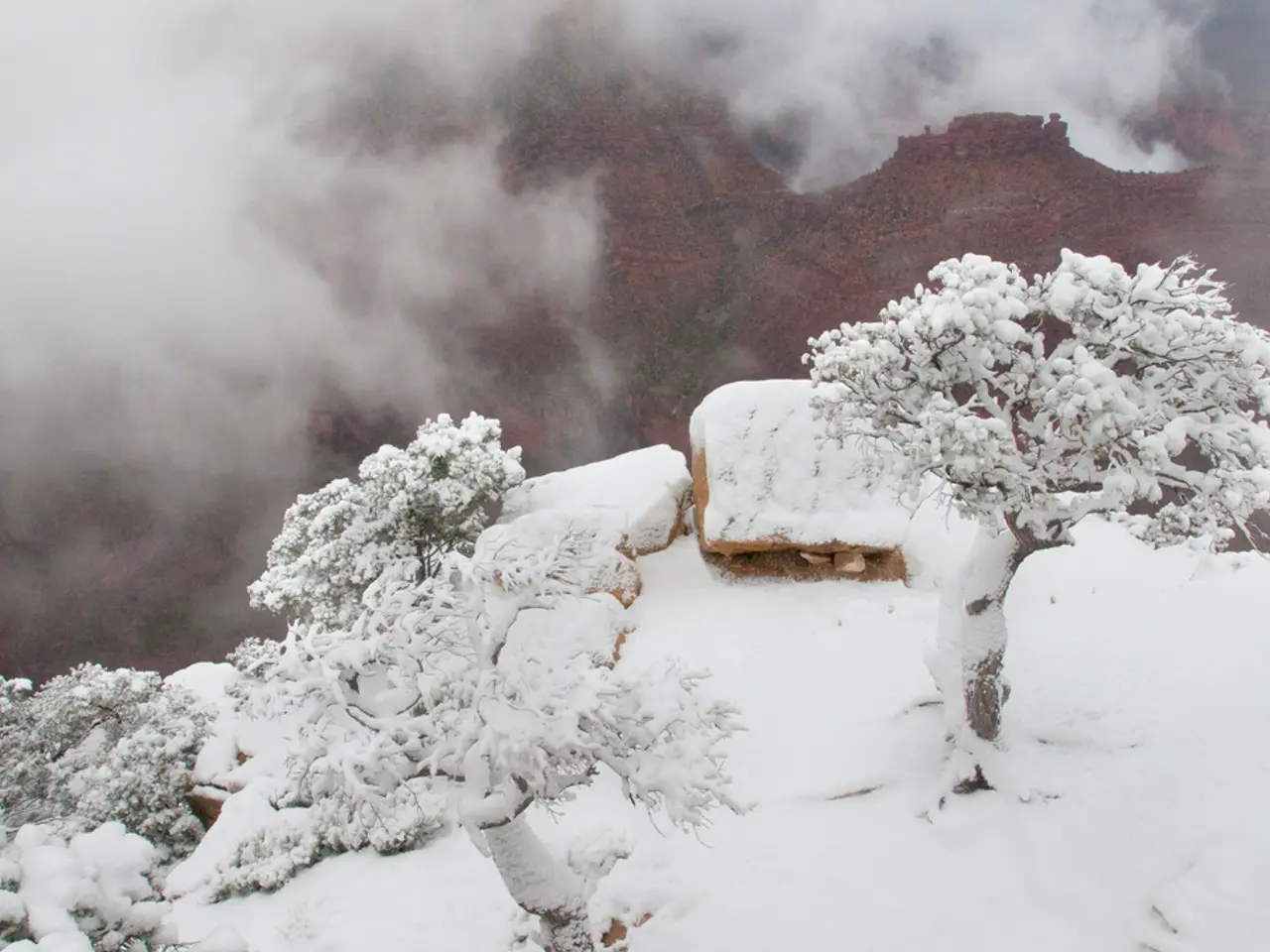Mars' Enigmatic Dark Streaks Disprove Previous Scientific Assumptions Regarding Water Presence
A recent study published in the journal Nature Communications challenges the hypothesis of liquid water presence on Mars, offering a more nuanced understanding of recurring slope lineae (RSL) on the planet.
The study, conducted by planetary scientists from Brown University and the University of Bern, suggests that RSL are more likely the result of wind and dust, not water flow. This finding contradicts the earlier hypothesis that RSL mark active brine flows and instead supports a dry geological process driven by dust movement.
Valin Bickel, a co-author of the study and a University of Bern Center for Space and Habitability fellow, made a statement about the study at Brown University. Adomas Valantinas, another co-author and a planetary scientist at Brown University who specializes in Martian geology, explained that the "big data approach" helps to rule out hypotheses from orbit before spacecraft are sent to explore.
The study used artificial intelligence to create a map of Martian slope streaks by training an algorithm on a dataset of confirmed slope streak sightings. The researchers compared the map of Martian slope streaks to databases and catalogs of various factors like temperature, wind speed, hydration, rock slide activity, and other conditions to understand the conditions under which these features form.
The findings offer a significant shift in the understanding of RSL on Mars. While seasonal brines may still form transiently under specific conditions, these recurring slope lineae are no longer considered definitive evidence of present-day flowing water on Mars. This change in perspective alters priorities for planetary protection and habitability assessments.
The study serves as an advantage for future Mars explorations by avoiding areas that might harbor terrestrial life, such as microbes, which could contaminate Martian habitats and interfere with our search for Martian life if slope streaks were confirmed to be caused by water.
The study's findings are a reminder that not every scientific breakthrough needs to be about extraterrestrial life. Mars, with temperatures as low as -225 degrees Fahrenheit or -153 degrees Celsius, remains a challenging environment for life as we know it.
The study follows earlier indications from Martian features that traditionally require water, like flow channels and hydrated minerals. However, more recent high-resolution orbital imagery and global analyses raise strong doubts about this liquid water interpretation.
Despite the new findings, the possibility of small amounts of water potentially mixing with enough salt to become liquid and flow down a slope on Mars remains plausible. However, large-scale flowing water seems unsupported by the most recent planetary mapping.
The study was a reminder of the Viking mission, which successfully landed the first spacecraft on Mars in 1976. Scientists observing Mars' surface images from the Viking mission noticed long, dark streaks on crater walls and cliff sides. Some researchers suggested that the Martian streaks were the result of water flow, but the new study offers a more plausible explanation in terms of wind and dust.
In summary, the current scientific consensus increasingly favors a dry dust avalanche mechanism over seasonal liquid water flows as the primary cause of RSL. While seasonal brines may still form transiently under specific conditions, these recurring slope lineae are no longer considered definitive evidence of present-day flowing water on Mars.
- The study published in Nature Communications, conducted by scientists from Brown University and the University of Bern, challenges the hypothesis of liquid water presence on Mars and suggests that recurring slope lineae (RSL) are more likely the result of wind and dust.
- Valin Bickel, a co-author of the study, made a statement about the study at Brown University, highlighting that the "big data approach" helps to rule out hypotheses from orbit before spacecraft are sent to explore.
- The study used artificial intelligence to create a map of Martian slope streaks, comparing it to databases and catalogs of various factors like temperature, wind speed, and other conditions to understand the conditions under which these features form.
- The findings of the study offer a significant shift in the understanding of RSL on Mars, as RSL are no longer considered definitive evidence of present-day flowing water on Mars, altering priorities for planetary protection and habitability assessments.




